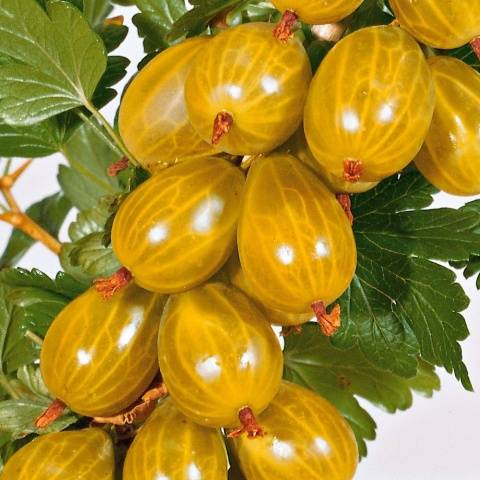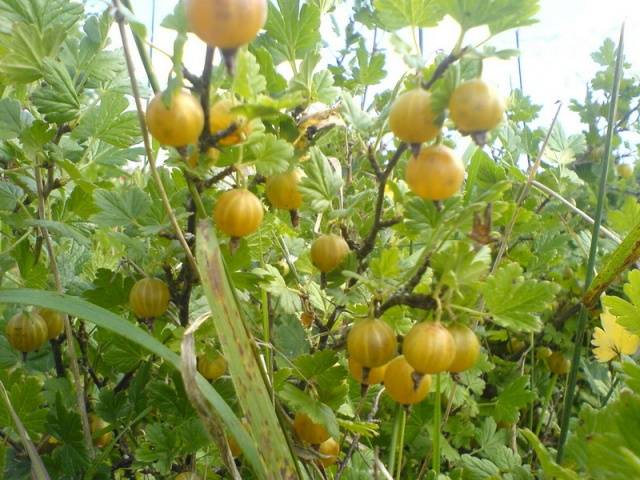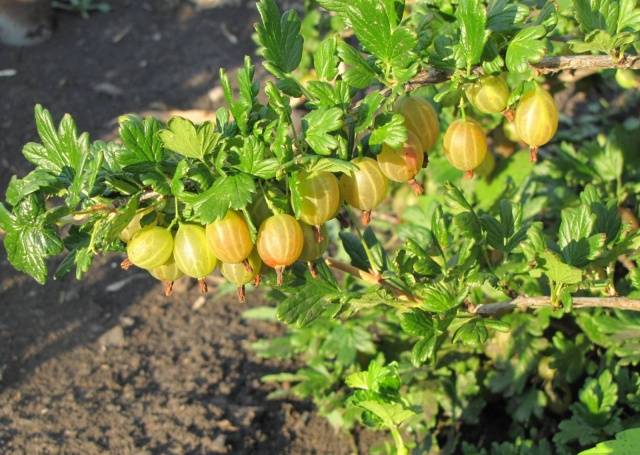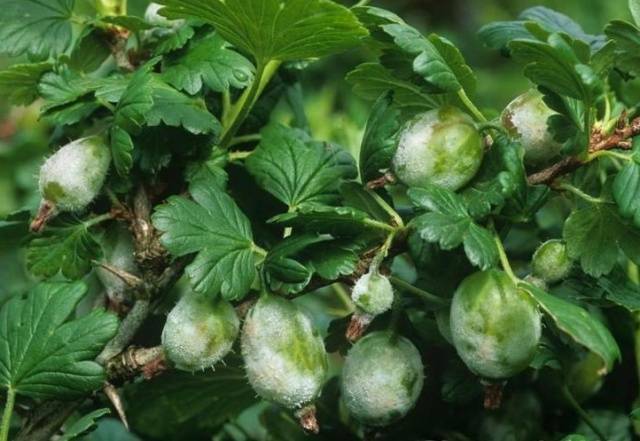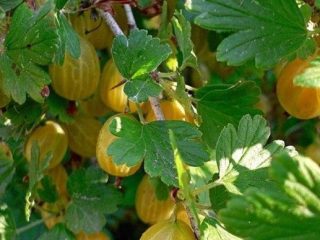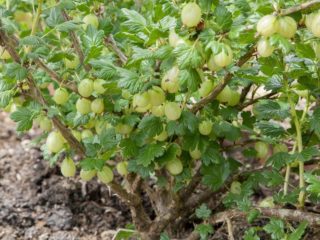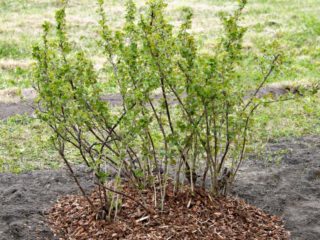Content
Gooseberries are prized for their unpretentiousness, productivity and vitamin-rich berries. There are not so many yellow gooseberry varieties, and one of them is Honey.
Breeding history of the variety
Gooseberry Honey was bred by domestic specialists of the All-Russian Research Institute of Michurinsk. The Scientific Institute deals with the problems of horticulture and the development of new varieties of fruit and berry crops. The honey gooseberry variety got its name due to the sweet taste and yellow color of the berries.
Description of the bush and berries
Honey gooseberry is a spreading, medium-sized bush. Numerous thorns are located on the shoots, which interferes with harvesting.
The berries of the Honey variety are yellowish and medium in size. The shape is round or pear-shaped. The skin is thin, translucent. The pulp is tender and soft.
Characteristics
When choosing a gooseberry variety, its characteristics matter: yield, resistance to frost, drought, diseases and pests. When growing berries for sale, special attention is paid to their transportability.
Yield
Honey gooseberry has a high yield. Up to 4-6 kg of fruits are harvested from one bush. The variety responds positively to agricultural technology by increasing yields.
Drought resistance and winter hardiness
The Honey variety has an average winter hardiness. The bushes tolerate a drop in temperature in winter to -22 degrees.
The drought tolerance of gooseberries is also moderate. In the absence of moisture, the bush discards the ovaries, and the fruits lose their sugar content.
Disease and pest resistance
Honey gooseberry is susceptible to fungal diseases that develop in high humidity. Most often, signs of powdery mildew appear on gooseberries. Therefore, preventive spraying is an obligatory step in caring for the variety.
Lack of care and high humidity create conditions for the reproduction of pests. Observance of agricultural technology and regular treatment of the bush helps to get rid of insects.
Ripening period
The harvest from the bushes of the Honey variety begins to be harvested at the end of July. Ripe fruits acquire a bright yellow color. They are used fresh or frozen, as well as for compotes, preserves, jam and other homemade preparations.
Transportability
Due to the soft skin, the berries of the Honey variety are not stored for a long time. The shelf life of gooseberries in the refrigerator is no more than 4-5 days.
Low boxes are used to transport berries. The bottom of the container is covered with paper, gooseberries are poured on top.
Advantages and disadvantages
The main advantages of the Honey gooseberry variety:
- sweet taste;
- high productivity;
- frost resistance.
The disadvantages of honey gooseberry are:
- a large number of thorns;
- the need to protect against disease.
Growing conditions
To obtain a high yield, it is recommended to provide the gooseberry with a number of conditions:
- constant natural light;
- lack of drafts;
- plain or high ground;
- fertile neutral or slightly acidic soil.
The taste and size of Medovy berries depend on the illumination of the plot. In the shade, the shrub grows slowly, which affects its productivity.
It is not recommended to plant gooseberries in lowlands or wetlands.With constant exposure to moisture, the root system rots, the bush does not develop and dies over time. Planting of the Medovy variety is allowed in the middle of a non-steep slope.
Clay soil is not suitable for planting a bush. In heavy soil, moisture constantly stagnates, and nutrients arrive at the roots more slowly. The introduction of sand and humus will help to improve its structure.
Landing features
Gooseberries are planted in the fall after leaf fall (from late September to mid-October). Before winter, the bush will have time to take root and will tolerate a cold snap well.
If the work is postponed to spring, then it is important to complete them before budding. However, the soil and air should warm up well.
For planting, choose healthy seedlings of the Honey variety, one-year or two-year. The bush should have a strong root system with a length of 30 cm and several shoots. Choose seedlings that are free from damage or decay.
The order of planting honey gooseberries:
- Dig a hole 50 cm in diameter. The depth depends on the size of the root system.
- Leave the shrinkage hole for 2-3 weeks.
- Add 10 kg of compost to fertile soil, as well as 50 g of potassium salt and superphosphate each.
- Pour sand at the bottom of the pit if the soil is clayey. Then place the prepared soil mixture.
- Place the seedling in the hole and cover the roots with soil.
- Drizzle the gooseberries liberally.
1-1.5 m is left between the bushes.If the culture is planted in several rows, then 3 m is kept between them.
Care rules
With proper care, a healthy gooseberry bush is formed and yields are increased. The Honey variety needs feeding and pruning. In cold regions, special attention is paid to preparing for winter.
Support
To prevent the berries from falling on the ground, it is recommended to install a support around the bush. Wooden sticks are used as support or wire is pulled between iron posts. The optimum support height is 30 cm above the ground.
Top dressing
During flowering and the formation of ovaries, gooseberries are watered abundantly. The soil should be soaked to a depth of 40 cm. Mulching the soil with straw or humus helps to preserve moisture.
During the season, honey gooseberries are fed several times:
- in the spring after the snow melts (1/2 bucket of compost, 50 g of superphosphate, 30 g of potassium sulfate);
- after flowering (mullein solution);
- at the beginning of fruiting (wood ash).
Dry fertilizer is embedded in the near-trunk soil. Gooseberries are poured with a solution under the root.
Pruning bushes
In early spring, weak, frozen and dry shoots are cut from the gooseberry. Processing is carried out before the start of sap flow. If necessary, the bush is pruned in late autumn if there are broken branches.
Be sure to eliminate shoots older than 8 years, since they bring a minimum of berries. They are identified by their dark brown, almost black color.
Reproduction
You can get new seedlings of the Honey variety in the following ways:
- Cuttings. In the fall, cut several branches 20 cm long. Until February, they are kept in a cellar, then rooted in a greenhouse or at home. In the spring, when the root system is formed in the cuttings, they are planted in open ground.
- By dividing the bush. When transplanting the honey gooseberry variety, its root system is divided into several parts. Each seedling should have several strong roots.
- Layers. In the spring, young shoots are chosen, which are lowered to the ground and sprinkled with earth. After rooting, the layers are separated from the mother bush and planted in a new place.
Preparing for winter
Autumn preparation helps the honey gooseberry to survive the cold, snowless weather. In October, the bush is watered abundantly with water to increase its winter hardiness.
The soil under the branches is mulched with humus with a layer of 10 cm. After the snow falls, a snowdrift is thrown over the bush for additional insulation.
Pest and disease control
Gooseberries are susceptible to the following diseases:
- Powdery mildew. Has the appearance of a grayish bloom that appears on shoots, leaves and berries.Over time, the plaque darkens and leads to the death of the bush. To protect the bush from disease, spraying with a solution of the HOM or Topaz preparation is performed.
- Anthracnose and spotting. Diseases are spread by harmful fungi. As a result, small gray spots with a brown border are formed on the leaves. Against the defeat, drugs containing copper are used.
- Mosaic. The disease is viral in nature and cannot be treated. When the first signs appear (a yellow pattern on the leaves), the bush is dug up and destroyed. To prevent mosaics, you need to disinfect garden tools, use healthy seedlings and follow agricultural techniques.
The main pests of gooseberries:
- Aphid. Small sucking insect that lives in colonies. You can determine the appearance of aphids by deformed branches and twisted leaves.
- Caterpillars. These pests eat gooseberry leaves and ways to completely destroy the bush in a week. The most dangerous are the caterpillars of the gooseberry sawfly and the moth.
- Gallica. The pest prefers thickened plantings and affects the shoots, flowers and leaves of plants.
Insecticides Fufanon or Actellik are used against pests. For prevention, treatment is performed in early spring and late autumn.
Conclusion
Honey gooseberry has a good taste and high yield. The bush is looked after by watering, fertilizing and pruning. Preventive spraying is mandatory.
Testimonials
